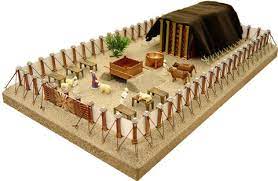Build it accurately

I have often been asked, why the passages related to the building of the Mishkan - tabernacle are so detailed in the Torah? Why is it so important for us to know exactly how it was built?
The hidden assumption in the question is that the end result is what we are interested in and we therefore assume that the long path to it can become boring and tiresome. In reality, the long road is the most important thing that the Torah is trying to convey to us. The journey is more interesting than the destination in this case. If we take a close look at our lives, we can easily see that there may be peak moments, but the question remains, “who are we?” Going through life, in which we invest a lot of blood, sweat and tears, leading up to some ultimate goal; it is precisely the hard work and the long path that characterizes us much more than the final result. The road to the objective is the thing that gives the depth dimension to the results.
The roots of the tree are not visible, nor are they impressive in their color or shape, but they are the ones that strengthen its standing, they are the ones that build its strength. Even a tall building is very dependent on its gray foundations. In fact, our peak events in life are those in which something "magical" happens, the quality of which is not measured in time and usually does not depend only on us. Suddenly we have a significant meeting with another person, we find ourselves in a special place, and so many more examples. If we examine the events that lead up to this big event in our lives, we will find that in fact the event may have importance, but it was the journey that got us there and influenced us, guided us to make the right decisions to reach that point in time.
Preparation is perhaps the most difficult stage, but the more precise it is, the more it describes the destination we want to eventually reach - good preparation defines the destination better.
Sages explain that each and every detail in the tabernacle carries a deep meaning. The upper worlds of creation and the inner worlds of man are reflected in it. It is possible that the first reflection is this reflection - the description of a meticulous effort to build something precise and accurate, something through which a life of holiness will pulsate.
***
It is no less important to remember; the tabernacle is only a vessel. It is a beautiful and magnificent house in which a lot of effort and a real desire to call out to God was invested. However, this house is only meaningful if the same forces that are invested in it are also invested, at least with the same intensity, in their connection with God through their worldly actions.
Just as the construction of the tabernacle is a precise and detailed process, so the building of the personality - building a personal personality as well as a national personality - should be precise. Just as in the construction of the tabernacle effort and money were invested, so also in the construction of the personality great efforts should be invested and attention should be directed to the work of the holy one blessed be He.
According to many commentators, the passages are not described according to the correct order. If so, why does Parshat Terumah appear after Parshat Mishpatim? According to what we understand, it can be best explained that the common denominator between legal cases mentioned in Parashat Mishpatim and donations mentioned in Parsashat Terumah, contains a multitude of details.
All the details that describe a complete and consistent life's work through which the inspiration of holiness takes place. The peak moments, also the spiritual ones, are not the center, but rather the consistent and sometimes boring hard work of keeping the covenant to walk in God's way - on the track that ascends to God.
When a person follows the difficult path, he is guaranteed by God that God will sanctify him and He will be with him and with the people of Israel.
Shabbat Shalom, Matan Schneeweiss




Comments